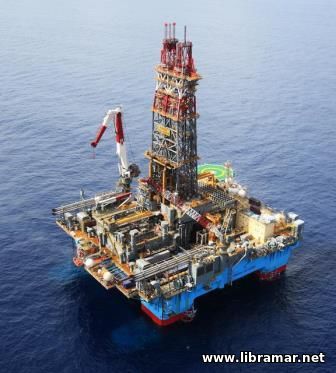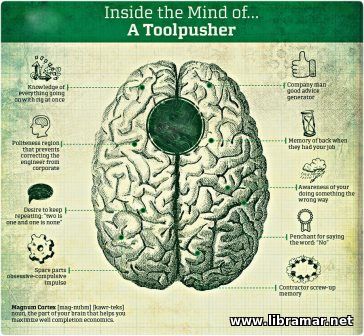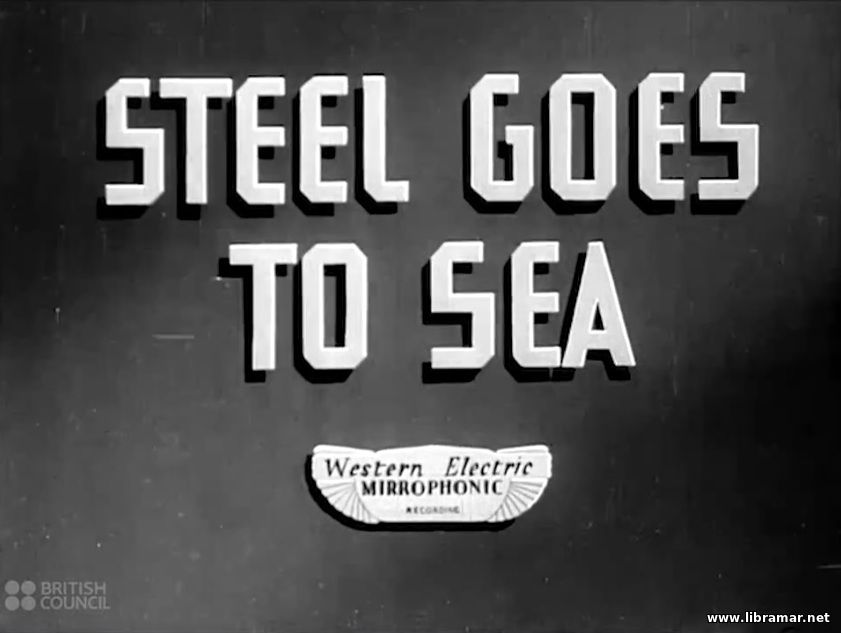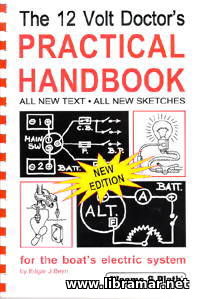Offshore People and Safety (cont.)

Rig Manager – Toolpusher
The toolpusher’s job has been redefined to include a broader range of responsibilities than formerly; hence the modern title, rig manager. The rig manager reports directly to the drilling superintendent. No longer is the main responsibility simple to get the hole drilled efficiently and quickly. The job has expanded to include direct control over safety, environmental, and other regulatory concerns in the field. The landowner’s concerns over access and water must be addressed. Supply firms must be contacted and supervised. Visitors must be controlled and made aware of safety procedures.
The rig manager makes sure each driller keeps all operations within the rig’s capability and that each driller trains the crew to work safely. Through experience, the hazards on the rig are known and eliminated promptly. If a job safety analysis program is in place, the rig manager has the primary role in its implementation. Periodic inspections are done with each driller’s participation and input. A rig safety list is filled out and the inspection results are reported to the superintendent. The manager investigates every accident, analyzes it with the driller and crew, and oversees needed corrective measures.
Driller
The driller reports directly to the rig manager. The driller is in charge of the rig and crew on the location. From the driller’s console area he or she controls the drawworks and brakes, sets the bit weight, rotary speed, and pump pressure. Experience is important because errors in judgment can lead to damage to the rig or injury to the crew. The rig crew must trust the driller completely because safety depends a great deal on a driller’s skill. A driller must be constantly aware of safety, not only of behavior and actions, but also of each person on the rig. The driller knows the value of teamwork and sees that the crew operates as a well-trained team; knows the ability of each individual; and won’t assign a green hand a job beyond his or her experience.
The driller and the rig manager decide when to pull and change the bit. During active times on the drill floor, such as during a trip or a connection, the driller runs the rig at a pace suited to the crew, knowing that pushing them beyond their ability is dangerous. The driller makes certain that the new crewman knows the job, as well as the safety procedures involved in doing it.
The driller sees that the rig is well-maintained, and trains the crew to be on constant alert for worn or faulty equipment. Once spotted, immediate steps are taken to correct the problem. Drillers make certain all guards, signs, and protective devices are in place and in good condition. A driller must enforce the use of personal safety harnesses by anyone climbing or working overhead. Horseplay is not allowed on the rig. Should a crewman show signs of being under the influence of alcohol or drugs, the driller will relieve him of duty immediately and report the occurrence to the rig manager. The driller keeps all important paperwork current, such as bit performance records, daily reports, and time sheets.
Crew Members
The crew usually consists of a derrickman, two or three floormen and, depending on the rig, a motorman and/or electrician. Each must know the job and function as a team in order to work efficiently and safely.
Each crewman must report to work on time alcohol and drug free. The job demands everyone to be fully alert. Many contractors conduct random drug testing with mandatory testing of the whole crew following an accident. Crewmen must wear personal protective equipment, including proper clothing. Excessive hair length can be hazardous. In some situations beards are forbidden.
On the rig, each crewman must always be safety-conscious. The careful worker learns to be observant, foreseeing danger before harm is done. Some jobs will be repetitive, which can lead to carelessness; that is when the danger increases.
 Every crew member should be aware of being struck by or caught between objects, especially around the pipe racks, mud pumps and tanks, and on the rig floor. A rig worker should not engage in unsafe practices. Tools must not be lying around the floor, ladders, or walkways because they present a trip or fall hazard. Crew members should always use the ladders and stairs, and avoid jumping off anything over three feet high. Sliding down rails or riding the catline or elevators must not be done. Very importantly, everyone helps the new crew member by instructing him or her on the correct way to do the job safely and by pointing out the hazards around the rig. A competent crew avoids horseplay and practical jokes that might have serious consequences.
Every crew member should be aware of being struck by or caught between objects, especially around the pipe racks, mud pumps and tanks, and on the rig floor. A rig worker should not engage in unsafe practices. Tools must not be lying around the floor, ladders, or walkways because they present a trip or fall hazard. Crew members should always use the ladders and stairs, and avoid jumping off anything over three feet high. Sliding down rails or riding the catline or elevators must not be done. Very importantly, everyone helps the new crew member by instructing him or her on the correct way to do the job safely and by pointing out the hazards around the rig. A competent crew avoids horseplay and practical jokes that might have serious consequences.
The "Read Later" function allows you to add material to this block with just one click. Just click on the icon and read the articles that interest you at any convenient time.


